

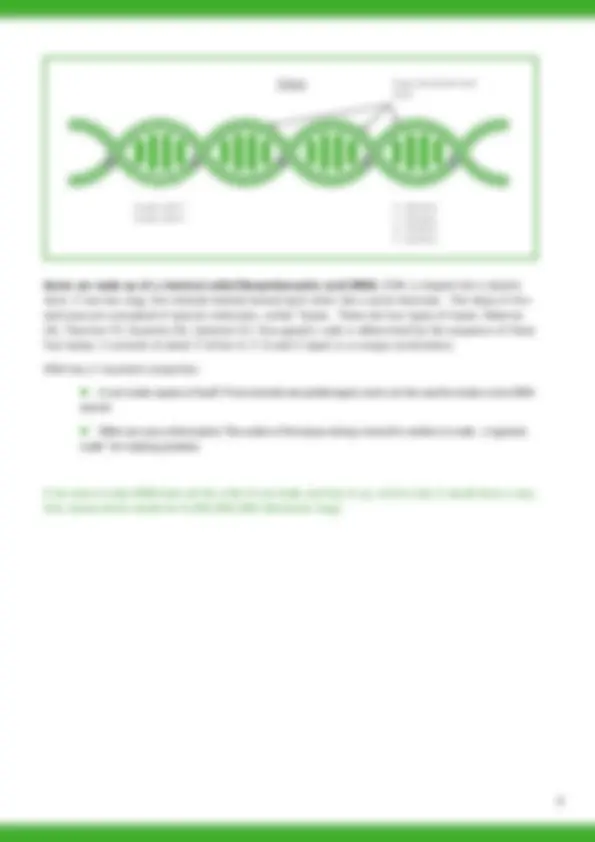
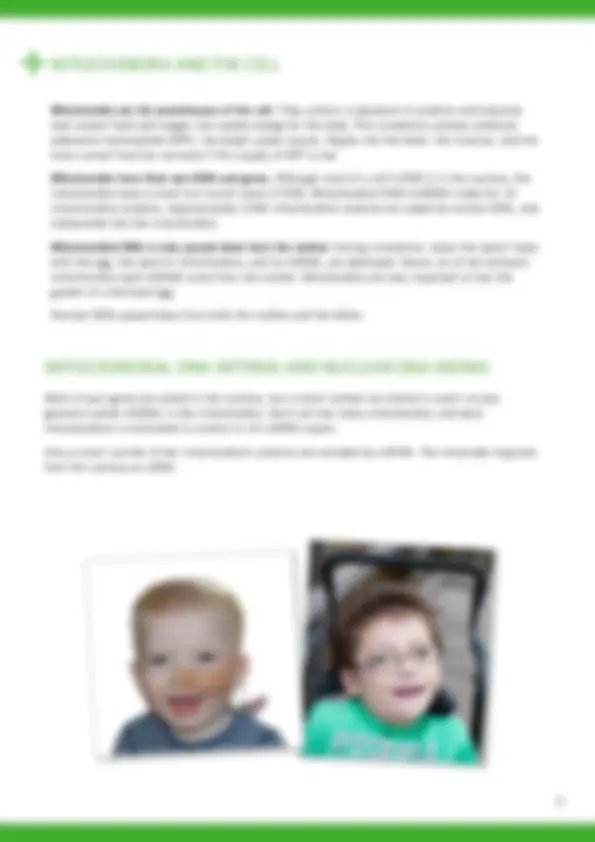
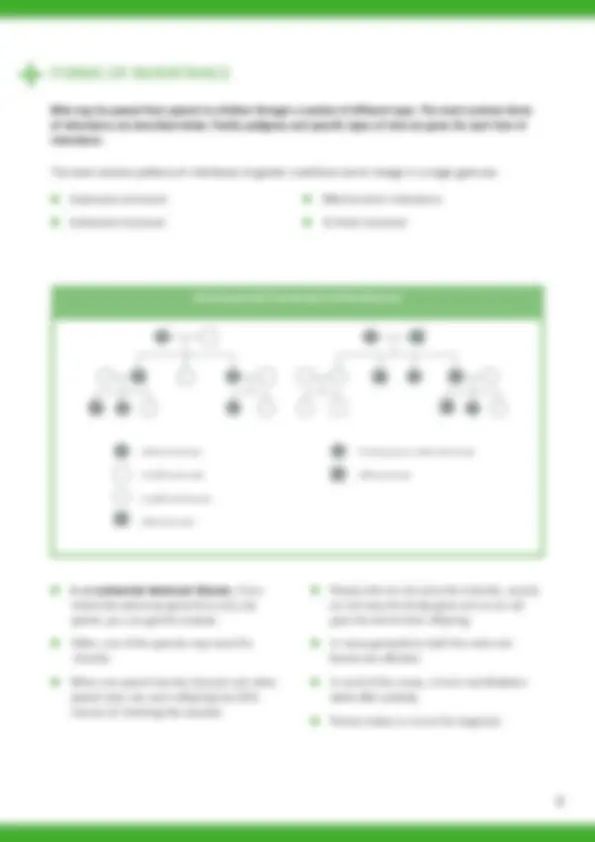
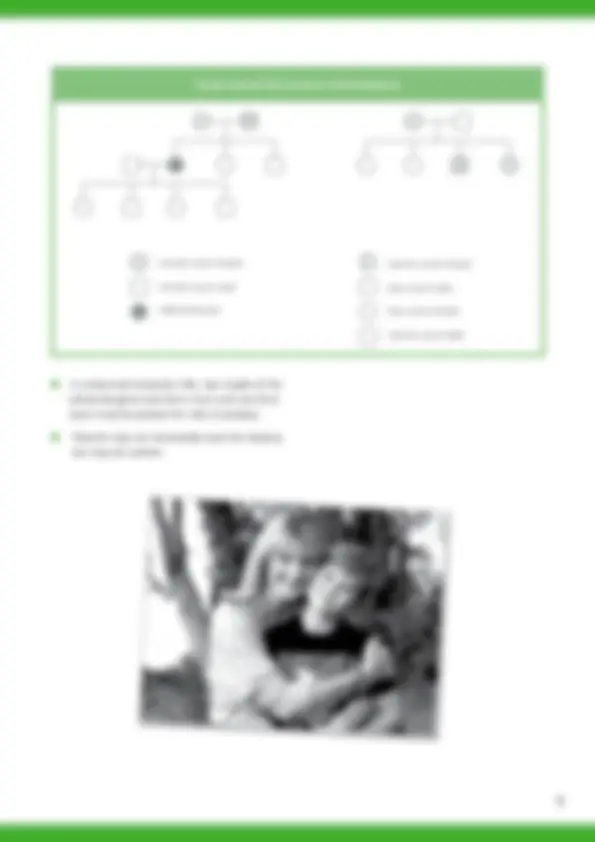
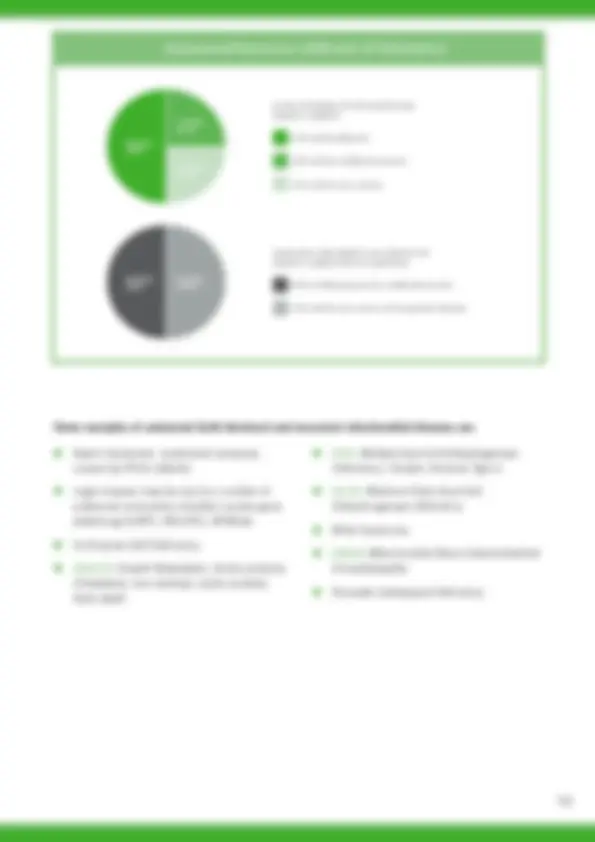


Study with the several resources on Docsity

Earn points by helping other students or get them with a premium plan


Prepare for your exams
Study with the several resources on Docsity

Earn points to download
Earn points by helping other students or get them with a premium plan
Community
Ask the community for help and clear up your study doubts
Discover the best universities in your country according to Docsity users
Free resources
Download our free guides on studying techniques, anxiety management strategies, and thesis advice from Docsity tutors
An introduction to genes, their role in inheritance, and the impact of genetic variations on health, with a focus on mitochondrial diseases. Topics covered include the structure and function of genes, DNA, proteins, and mitochondria, genetic variation and its relation to diseases, and the different types of inheritance in mitochondrial diseases. The document also discusses the importance of understanding family health history in mitochondrial disease diagnosis.
Typology: Slides
1 / 12

This page cannot be seen from the preview
Don't miss anything!







Genes are made up of a chemical called Deoxyribonucleic acid (DNA). DNA is shaped like a double helix. It has two long, thin strands twisted around each other like a spiral staircase. The steps of this staircase are composed of special molecules, called “bases. There are four types of bases: Adenine (A), Thymine (T), Guanine (G), Cytosine (C). Your genetic code is determined by the sequence of these four bases; it consists of about 3 billion A, T, G and C bases in a unique combination.
DNA has 2 important properties:
n It can make copies of itself. If two strands are pulled apart, each can be used to make a new DNA strand.
n DNA can carry information. The order of the bases along a strand is written in code - a “genetic code” for making proteins
If we were to take DNA from all the cells of our body and line it up, end to end, it would form a very thin strand which would be 9,656,064,000 kilometers long!
A pairs with T G pairs with C
A - Adenine T - Thymine G - Guanine C - Cytosine
Sugar phosphate back bone
A G A G
T C T C
DNA
MITOCHONDRIA AND THE CELL
Mitochondria are the powerhouses of the cell. They contain a sequence of proteins and enzymes that convert food and oxygen into usable energy for the body. This conversion process produces adenosine triphosphate (ATP), the body’s power source. Organs like the heart, the muscles, and the brain cannot function normally if this supply of ATP is low.
Mitochondria have their own DNA and genes. Although most of a cell’s DNA is in the nucleus, the mitochondria have a small but crucial piece of DNA. Mitochondrial DNA (mtDNA) codes for 13 mitochondrial proteins. Approximately 1500 mitochondrial proteins are coded by nuclear DNA, and transported into the mitochondria.
Mitochondrial DNA is only passed down from the mother. During conception, when the sperm fuses with the egg, the sperm’s mitochondria, and its mtDNA, are destroyed. Hence, all of the embryo’s mitochondria (and mtDNA) come from the mother. Mitochondria are very important to fuel the growth of a fertilised egg.
Nuclear DNA passed down from both the mother and the father.
MITOCHONDRIAL DNA (MTDNA) AND NUCLEAR DNA (NDNA)
Most of your genes are stored in the nucleus, but a small number are stored in small circular genome (called mtDNA) in the mitochondria. Each cell has many mitochondria, and each mitochondrion is estimated to contain 2–10 mtDNA copies.
Only a small number of the mitochondria’s proteins are encoded by mtDNA. The remainder originate from the nucleus as nDNA.
OTHER FACTORS OF MITO INHERITANCE
this person carries only one recessive copy of the gene. If this person has a child with another person with a recessive copy of the same mito gene, their child will have a significant chance of developing the disease.
of their own DNA, and some of them may have harmful variations and others may not. The ratio of harmful to normal mtDNA is called heteroplasmy, and affects the severity of mito. Levels of heteroplasmy may change over time, leading to disease onset later in life.
UNDERSTANDING YOUR FAMILY’S HEALTH HISTORY IS EXTREMELY IMPORTANT DURING MITO DIAGNOSIS
Gather as much information about your family’s health history as possible before an evaluation for mito. If you have relatives with premature deafness, blindness, seizures, or other signs of mito, this information is very important to doctors. It can help determine what type of mito may run in your family.
Doctors and genetic counsellors will use this information to develop a family pedigree, which is a graph of your family tree. It can illustrate which individuals carry disease genes and which do not.
n In an autosomal dominant disease, if you inherit the abnormal gene from only one parent, you can get the disease.
n Often, one of the parents may have the disorder
n When one parent has the disorder and other parent does not, each offspring has 50% chance of inheriting the disorder.
n People who do not carry the disorder, usually do not carry the faulty gene and so do not pass the trait to their offspring.
n In many generations both the male and female are affected.
n In most of the cases, clinical manifestation starts after puberty.
n Family history is crucial for diagnosis.
Autosomal Dominant Inheritance
FORMS OF INHERITANCE
Mito may be passed from parents to children through a number of different ways. The most common forms of inheritance are described below. Family pedigrees and specific types of mito are given for each form of inheritance.
The most common patterns of inheritance of genetic conditions due to change in a single gene are:
n Autosomal dominant
n Autosomal recessive
n Mitochondrial inheritance
n X-linked recessive
Some examples of autosomal (both dominant and recessive) mitochondrial diseases are:
n Alper’s Syndrome (autosomal recessive, caused by POLG defects)
n Leigh disease (may be due to a number of autosomal recessively inherited nuclear gene defects eg SURF1, NDUFS1, GFM1etc
n Co-Enzyme Q10 Deficiency
n GRACILE: Growth Retardation, Amino aciduria, Cholestasis, Iron overload, Lactic acidosis, Early death
n MAD: Multiple Acyl-CoA Dehydrogenase Deficiency / Glutaric Aciduria Type II
n MCAD: Medium-Chain Acyl-CoA Dehydrongenase Deficiency
n Miller Syndrome
n MNGIE: Mitochondrial Neuro-Gastrointestinal Encephalopathy
n Pyruvate Carboxylase Deficiency
WHEN ONLY ONE PARENT IS AN UNAFFECTED GENETIC CARRIER FOR THE CONDITION: 50% of offspring can be unaffected carriers
50% will be non-carriers of the genetic disease
IN THE OFFSPRING OF TWO UNAFFECTED GENETIC CARRIERS: 25% will be affected
50% will be unaffected carriers
25% will be non-carriers
X-linked Recessive Inheritance
XCX
XC^ Y
XCX XC^ Y
XC^ X XCX
XY
XY XY
XX XY XY
XX
Some examples of x-linked recessive mitochondrial disorders are:
n Barth Syndrome: X-linked Cardiomyopathy, Mitochondrial Myopathy, Cyclic Neutropenia (caused by TAZ gene)
n LIC: Lethal Infantile Cardiomyopathy